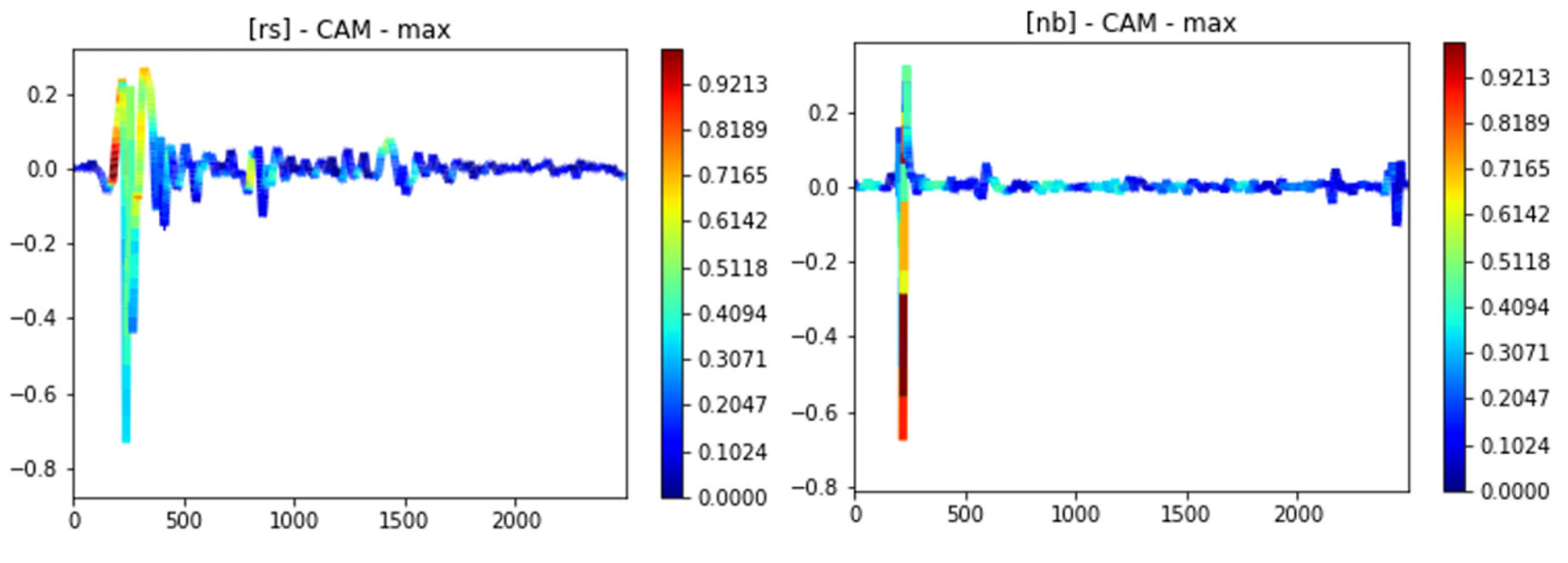摘要详情
354 / 2022-03-15 16:53:13
Classification of VLF/LF Lightning Signals using Deep Learning Method
VLF/LF lightning waveform,waveform classification,deep learning
终稿
Purpose/Aim
During the lightning detection based on the VLF/LF band, narrow bipolar pulses (NBE) and return strokes (RS) are the two most common lightning waveforms. NBE generate from intracloud discharges and are characterized by its narrow pulse width and bipolar peaks. The peak in the first half cycle of NBE is similar to RS. Due to the similar waveform characteristics, lightning detection systems such as NLDN, which identify lightning waveforms with empirically based methods, have a high misclassification rate when classifying NBE and RS waveforms. Convolutional neural networks (CNN) are effective classification tools that automatically extract features from images. The performance of CNN can improve as the dataset grows. To improve the detection efficiency of lightning detection systems, it is helpful to use CNN to improve the accuracy in NBE/RS classification.
Experimental/Modeling methods
This paper used a 1D CNN model for classification. The training data was obtained from waveform data collected by ten sets of lightning field meters deployed in several provinces in China in the years of 2019-2020. The raw dataset was denoised using EMD and sgolay smoothing methods to form the NBE/RS classification dataset for training. Then classification accuracy can be calculated on the validation set after training. Finally, the CAM method was used to validate the classification of the model.
Results/discussion
The training result shows that the 1D CNN model achieves an accuracy of 91.3%, which has a significant improvement contrast to the NLDN’s misclassification rate of 78.3% and 56% of the ENTLN. This paper also visualized the classification of the model by the CAM method, and the visualization shows that the main focus of the model in making a NBE prediction is on the narrow pulse width and bipolarity of the waveform, and the main focus when making a RS prediction is on the slower secondary peaks besides the main pulse.
Conclusions
The results show that the 1D CNN model has a significant improvement in the accuracy of RS and NBE waveform classification compared to the traditional empirical-based method. Analysis of the visualized model classification process reveals that the high accuracy of the 1D CNN method lies in the accurate localization of the narrow pulse and bipolar features in the NBE waveform, which is consistent with manual classification and proves the reliability of this method.

重要日期
-
会议日期
09月25日
2022
至09月29日
2022
-
08月15日 2022
提前注册日期
-
09月10日 2022
报告提交截止日期
-
11月10日 2022
注册截止日期
-
11月30日 2022
初稿截稿日期
-
11月30日 2022
终稿截稿日期
主办单位
IEEE DEIS
承办单位
Chongqing University
联系方式
- Zhengyong Huang
- 61******@qq.com
历届会议
-
2020年09月06日 中国 Beijing
2020 IEEE International Conference on High Voltage Engineering and Application -
2018年09月10日 希腊
2018 IEEE International Conference on High Voltage Engineering and Application -
2016年09月19日 中国 Chengdu, China
2016 IEEE International Conference on High Voltage Engineering and Application

